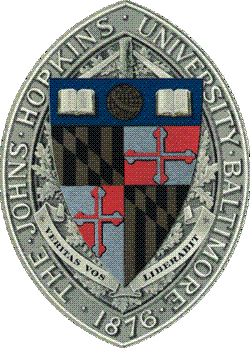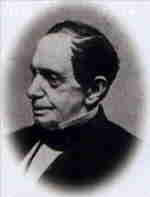 SKC Films Library SKC Films Library |
|
|
| SKC Films Library >> Education >> Individual Institutions: United States |
| Johns Hopkins University Founded in 1876, Johns Hopkins University was the first university in the Western Hemisphere to be based on the European research institution, with a mission both to teach and to advance human knowledge through discovery. It was also the first American university to teach through seminars, and the first in the United States to offer an undergraduate major (as opposed to a purely liberal arts curriculum). Today, Johns Hopkins is first among all U.S. universities in receipt of federal research and development funds. The university was named for Baltimore merchant Johns Hopkins, whose $7 million bequest was used to finance its establishment.
Campuses Homewood, the main campus of Johns Hopkins, is located in northern Baltimore, Maryland. Covering 140 acres, it was once the estate of Charles Carroll. The Krieger School of Arts and Sciences, Whiting School of Engineering, School of Education, and Carey Business School are all located on the Homewood Campus. The schools of Medicine, Public Health, and Nursing share a campus in eastern Baltimore with the Johns Hopkins Hospital. The Peabody Institute, a university-operated research institution, is located in downtown Baltimore. The Paul H. Nitze School of Advanced International Studies is located in the Dupont Circle area of Washington, D.C. The Applied Physics Laboratory, a division of the university that is co-equal with the schools but which has a non-academic, research-based mission, is located between Baltimore and Washington. Johns Hopkins University also has a campus near Rockville in Montgomery County, Maryland, as well as academic facilities in Nanjing, China, and Bologna, Italy. History In 1873, Baltimore merchant Johns Hopkins bequeathed $7 million -- mostly in Baltimore & Ohio Railroad stock -- for the purpose of establishing a hospital and institutions of higher learning. The single largest act of private philanthropy in U.S. history to that time, the money was subsequently used to establish the Johns Hopkins Colored Children Orphan Asylum (1875), the Johns Hopkins University (1876), the Johns Hopkins Press (1878), the Johns Hopkins Hospital and Johns Hopkins School of Nursing (1889), and the Johns Hopkins University of Medicine (1893).
Johns Hopkins opened as America's first research university on February 22, 1876, with Daniel Coit Gilman as its first president, and the first class graduated in June of 1879. Notable Graduates William Foxwell Albright (1916) --
authenticator of Dead Sea Scrolls Johns Hopkins's official website is www.johnshopkins.edu. |
| SKC Films Library >> Education >> Individual Institutions: United States This page was last updated on 05/11/2017. |

